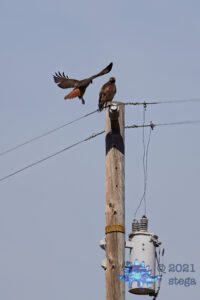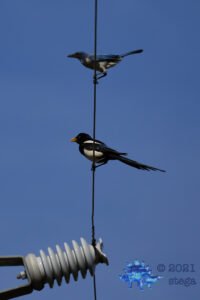
Modernism a Sense of Play
The following essay was written for English seminar on Modernism. Within it there are refrences to various works that were required for the class. These were: Faulkner’s The Sound and the Fury, Dos Pasos’s The Big Money, Woolf’s To the Lighthouse ,Stein’s Three Lives, Hemingway’s In Our Time and numerous works centered around the Harlem Renaisance. While the piece’s orignal title is still “Modernism: A sense of play” it might be more aptly called “Searching for a definable Modernism at the Modern University” This is not just an essay, however, for it is my attempt to formulate my own ideas in my own context.
In Euclidean Geometry tangents intercept a circle at only one point.
“Ya es hora
De empezar a morir. La noche es buena
Para decir adios. La luz estorba
Y la palabra humana. El universo
Habla mejor que el hombre.” ^1
Fragments are linear or circular but always of patterned nature.
She looked in the dictionary first. All that it said was the support of modern thoughts, styles; tendency towards the modern. Lovely. She turned to the haphazard notes before her and tried to structure her own definition. Perhaps: an eclectic group of writings produced roughly from 1900 to before the second world war. A bit better.
“At one time I was inclined to take the extreme position that the only critics worth reading were the critics who practiced, and practiced well, the art of which they wrote.” ^2
The origins of Modernism.
Modernity. Society. Nature. War. Reason. God. Order. Self-Creation.
(Then entered the Post-Modern.)
Why leave realism and its objects?
Perhaps a move away from capitalism.
Perhaps because of boredom.
Perhaps to confuse the critics.
Perhaps to become the critics.
Perhaps its simple evolution.
Perhaps a way to return to our origins.
Perhaps a way to learn.
Perhaps a way to contradict.
“But I had to stretch this frame to make some important inclusions; and I have since been in search of a formula which should cover everything I wished to include, even if it included more than I wanted.” ^2
This really wasn’t working at all. She needed a thesis, an argument, some cohesive thought, but no, she was expected to write what she thought it meant. She wasn’t Woolf damn it. She didn’t have the command of thought or language. She just couldn’t break from tradition to re-define her perceptions. She was trained to search out criticisms on a work, read a few and then write a well planned essay. To hell with “disjointed unities” or even reading the bloody work. Besides, who really was ever going to read this beyond her professor.
“And the most important qualification I have been able to find, which counts for the peculiar importance of the criticism of practitioners, is that a critic must have a very highly developed sense of fact.” ^2
I broke open the fortune cookie and the message said, “You do not have this yet, but in twenty years you may have Hamlet memorized.”
With Modernism Hamlet is replaced by ourselves. The disciplinary society kills the sovereign and diffuses his power amongst itself. Epic tales of great men are replaced by episodes in normative lives.
She was raving a bit she realized, so she asked for help.
Modernism surrenders to its own point of view. It creates art or attempts to by its devices and so seeks realism against individualism and technique. Lukacs felt that characters cannot be separated from the contexts in which they were created. Jean Luc Picard, can appear on Saturday Night Live, but then so can John F. Kennedy Jr. But neither will exist for us across the table at dinner, only as a voice at the other end of the line.
“A thumbnail sketch,
A jeweler’s stone,
A mean idea to call my own
Old man don’t lay so still you’re not yet young
There’s time teach
Point to point, point observation
Children carry reservations
Standing on the shoulders of giants leaves me cold.” ^3
Her pride wanted to get in the way, so she looked back through her notes.
Point: I like the more fragmentary styles of Woolf, Dos Passos, Faulkner, Hemingway and even Stein.
Woolf uses waves that drew me from one voice to the next with the transitions between like the point where one almost sees the end of one wave as another rolls into it. Dos Passos uses unconnected fragments that made me try to draw connections. Hemingway seems to leave so much unsaid–with vague areas that left uncertainties. Faulkner’s fragments were more temporal as his uncertainties gradually seemed to lessen. Which explains why I enjoyed Benji and Quentin’s narratives more than the others. Stein wasn’t as interesting, perhaps because she was emasculated. I found her writing dry detached with the words all jumbled in on one another. Perhaps I like Modernism as it forces my own ideas shift and change .
Ideas change when a difference is created or discovered. In French to defer is to delay the meaning and to be defined in terms of what is not there. Hence we can have no meanings within a dictionary and recursive fault errors on older model Macintoshes.
“A mean idea to call my own
A hundred million birds fly away” ^3
Point: What then is the difference between observation and awareness? Use Lily Briscoe from To the Lighthouse as an example.
Observation: what we are aware of or see.
Awareness: what we perceive at the moment or observe.
The complexity of things is the distilling of the layers upon reflection.
“Surely she could imitate from recollection the glow, the rhapsody, the self-surrender, she had seen on so many women’s faces (on Mrs. Ramsay’s, for instance) when on some occasion like this they blazed up–she could remember the look on Mrs. Ramsay’s face–into a rapture of sympathy, of delight in the reward they had, which, though the reason of it escaped her, evidently conferred on them the most supreme bliss of which human nature was capable.”
Lily’s awareness of her present situation is that she is repeating a common thread of thought. Her observations from before come to mind.
Observation: what is seen at the moment.
Awareness: a collection of observations.
We have multiple lives, but fail to see our own fluidity.
” ‘What does it mean? How do you explain it all?’ she wanted to say, turning to Mr. Carmichael again. For the whole world seemed to have dissolved in this early morning hour into a pool of thought, a deep basin of reality, and one could almost fancy that had Mr. Carmichael spoken, for instance, a little tear would have rent the surface pool. And then? Something would emerge. A hand would be shoved up, a blade would be flashed. It was nonsense of course.”
Lily observes that reality seems to have dissolved. The temporal space around her seems distorted because of her own mind and its thoughts. She is aware that her mind is responsible for both this sensation and the conscious recognition of it.
Observation: what one is consciously aware of.
Awareness: what one unconsciously observes.
“But the dead, thought Lily, encountering some obstacle in her design which made her pause and ponder, stepping back a foot or so, oh, the dead! she murmured, one pitied them, one brushed them aside, one had even a little contempt for them. They are at our mercy. Mrs. Ramsay has faded and gone, she thought. We can over-ride her wishes, improve away her limited, old-fashioned ideas. She recedes further and further from us.”
Lily is conscious of the fact that those that are dead fade in our memories, yet she fails to consciously realize the contradiction her thoughts create. Mrs. Ramsay is more powerful now than when alive as her presence is now permanent an unchanging. Crystallized through death and her physical absence. Unconsciously Lily is even more aware of her presence.
Circles and Circles again.
Gender?
To subvert a role.
To objectify.
To create the messiah from a test tube.
To disenfranchise men.
To dispel the Angel.
To identify.
To create new discourses.
She found a contradiction: Modernism both radically subverts standard discourses and aligns itself with not so politically approved discourses. Her brain hurt from that–there was no place for such thoughts in academia was there?
“Singer sing me given
Singer sing me a song
Old man don’t lay so still you’re not young
There’s time to teach
Point to point, point observation
Children carry reservations
We’re standing on the shoulders of giants everybody’s looking on.” ^3
Where was rhythm. Where was rhyme. Woolf had this. What about Eliot. No she couldn’t make sense out of his fragments. The bits and pieces just didn’t line up nicely At least in Pulp Fiction you got connections. Eliot was showing off–supposedly dislocating meanings, but she decided it was just easier to leave him to the academics as well. They could handle such writers. That was their job.
Point: Agenda versus narrative. Discuss using The Sound and the Fury.
Social issues of Faulkner are part of the past and currant American culture. Here is a writer who concentrates on a distinct area or region. Decay and corruption with distorted temporal realities and varying narratives. Combined it gives an impression of the problematic region and social tensions. Four differing narratives attempt to tell the story of how a little girl with torn breeches ended up in a tree. Eliot felt that a modern work of Art needs to be difficult. The distortion of temporal space by both Benji and Quentin is the most obvious cause of any difficulty, but the shaded ramblings of Jason and deliberate, dependable Dilsey also distort my perceptions for I become all too conscious of time. Faulkner uses continuous narrations by varying characters. Each is incomplete in telling the story’s narrative, but why? Each is unreliable, yes, even Dilsey. Each has a different temporal reality. The reader must try to correlate them all.
Although she still couldn’t believe the explanation that there was an Oscar in the briefcase. That was like saying Daniel Steele was up for a Pulitzer. Say, didn’t Faulkner and Hemingway receive Pulitzers. That could be a paper topic. Perhaps if she looked at the structures of a work…sought out what they meant by fragments and stream of consciousness…separated the moo-cows and sorted out some semiotics…perhaps by out-lining all of her notes similarities would appear.
“Whispers of Immortality”
Those that tried to find a language that correlated symbol with meaning.
Those that were searching for meaning.
Those who meant to be remembered.
Those who remembered a war.
Those that were reacting to pressures of war.
Those who felt social pressurings.
Those who wished to leave their society.
Those that wanted…
Those who sought …
Mass markets to create commodities for consumption. Commodifying desire. Commodities are things that are readily consumed. A work of art in the age of mechanical reproduction. Objects of art that resist consumption. Objects of art that are made to be consumed.
Point: Fragmentation versus stream of consciousness writing. Using The Big Money and Three Lives as examples.
Fragmentation: Newsreels, camera eyes, and narration of important nobodies.
Stream of consciousness: Continual ever flowing thoughts with repetitions that echo or contradict one another.
“Jack o’Diamonds Jack o’Diamonds
You rob my pocket of silver and gold
WITNESS OF MYSTERY IN SLUSH PROBE
PHILADELPHIAN BEATEN TO DEATH IN HIS ROOM”
-Please hang up and try your call again.
“The rest of her life moved desperately on
in the clatter of scandalized tongues, among the kidding faces of reporters, the threatening of bailiffs, the expostulations of hotel-managers bringing overdue bills.”
-We’re sorry, you must first dial a “1” before dialing this number.
“He drank several cups of hot milk and then he went to bed. She went into the other bedroom and closed the door and lay down on the bed with a pile of books and pamphlets. She had some legal details to look up.”
-Thank you for using AT&T.
The great crash of 1929 overshadows our reading of these lives. The fragments want connecting. What of a beaten man, an avante garde dancer and two young socialists? How do they fit together? How do they relate to us? Perhaps Dos Passos is leaving this up to the reader. Perhaps it is all one soap opera with one story line taking spot light over others until someone dies or just gets boring.
Stein, however, flows on and on it seems unending. The good Anna.
“You see that Anna led an arduous and troubled life….
Anna had her troubles too….
Anna was very hard to live with in those next three days….
Anna endured….
Anna did not like this plan.
Anna was never daring in her ways….”
Creating a composition with just the bare forms. By repeating the same structures eventually they can lose their meanings. They are just empty statements–empty observations. Does this then comment on the emptiness of life?
Quote Freud. Quote Foucault. Quote Marx. Quote Weber. Quote Stalin. Quote Hitler. Quote Oppenheimer. Quote Crichton. Quote Lucas. Quote Yoda. Quote Thoreau. Quote Snyder. Quote Burroughs. Quote Freud.
Realism was good. It gave a real grasp of what the world was like. Not impressions and abstracts of reality. Wait! Someone had said just those thoughts. There were there in her notes. Lukacs, yes, that was it. Now there was a man who would have like Hemingway–maybe they knew each other. With a name like Luckacs, probably not. She liked Hemingway, so much in fact that she never once used Cliffs Notes when she was required to read one of his books. Perhaps there was a Cliffs Notes for this.
Race?
To subvert?
To redefine?
To explore?
To create?
To begin.
Point: I must admit that I could amend my ideas about modernism being restricted to Europe, for with the discussion of the American writers it would appear the movement was global. Or was it? Iso-nationalism was definitely present. To discuss or react most writers left or at least took a leave of absence. (Hemingway, Stein, Eliot, etc.) Those writers of the Harlem Renaissance were reacting as well, but doing so at home, yet is the Harlem Renaissance part of modernism? In a way yes, for it occurred in the same era and from many of the same forces, yet it is separate from modernism in its intent, as racial issues can be seen to precede the individual. America was so involved with itself, yet some did manage to express their ideas. Perhaps a better perspective is to look at the influence American writers overseas exerted.
No longer can I sit before a computer and count my words until I am done,
but there is so much more to consider.
High-Modernism
Context and the meaning of words
Voyeurism
What is history? (Fragments really.)
The longer I sit before a computer the more my head spins.
Who was writing around the same time as Hemingway? Fitzgerald, Steinbeck, Milne–wait that was it she could define Modernism in terms of Winnie the Pooh. “Pooh takes on Modernism and Stein,” or better still, “The Modernism of Pooh.” If Kanga was Woolfe and Christopher Robin’s absent parents the literature of past generations it would eventually come together. She would re-define Modernism. Market it for the masses. Revolutionize the study of it. With Pooh and perhaps a bit of Freud, chaos would be quelled and she would atleast have her three-thousand words.
Why must we continually breakdown and classify ideas: there is fiction, non-fiction, poetry, drama, prose, critiques, essays, case histories, letters, crime reports, etc. We always desire to put each in its place.
Define
Quantify
Conceptualize
Commidify
Deconstruct
Are we climbing back into the trees? Or are we approaching the ultimate goal of civilization, what-ever that may be?
“I am the king of all I see
My kingdom for a voice
Old man don’t lay so still you’re not yet young
Standing on the shoulders of giants leaves me cold.” 3
In non-Euclidean Geometry tangents may intercept a circle at two points.
Now is the time
to begin to die. The night is good
for saying farewell. The light hinders
as do the words of man. The universe
speaks better than the man.
Connections must be drawn, either in life or in thought.
Epilogue
Concerning the drawing of connections
If you were to quantify
or commidify
or conceptualize
such a work as this,
It would aid you
in your efforts,
yet hinder you
in your results.
Then, while one may listen
to the teachers
and the critics
they should return
to the poets
and the storytellers.
For only our own
impressions and thoughts
may be used
to define a possibilty.
(The only reality one knows is that which we create/experience.)
1 Jose Marti– “Dos Patias”
2 T.S. Eliot–“The Function of Criticism”
3 R.E.M. –“King of the Birds”















